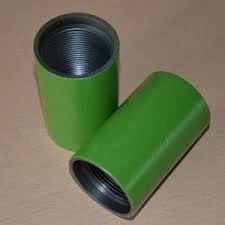- Afrikaans
- Albanian
- Amharic
- Arabic
- Armenian
- Azerbaijani
- Basque
- Belarusian
- Bengali
- Bosnian
- Bulgarian
- Catalan
- Cebuano
- Corsican
- Croatian
- Czech
- Danish
- Dutch
- English
- Esperanto
- Estonian
- Finnish
- French
- Frisian
- Galician
- Georgian
- German
- Greek
- Gujarati
- Haitian Creole
- hausa
- hawaiian
- Hebrew
- Hindi
- Miao
- Hungarian
- Icelandic
- igbo
- Indonesian
- irish
- Italian
- Japanese
- Javanese
- Kannada
- kazakh
- Khmer
- Rwandese
- Korean
- Kurdish
- Kyrgyz
- Lao
- Latin
- Latvian
- Lithuanian
- Luxembourgish
- Macedonian
- Malgashi
- Malay
- Malayalam
- Maltese
- Maori
- Marathi
- Mongolian
- Myanmar
- Nepali
- Norwegian
- Norwegian
- Occitan
- Pashto
- Persian
- Polish
- Portuguese
- Punjabi
- Romanian
- Russian
- Samoan
- Scottish Gaelic
- Serbian
- Sesotho
- Shona
- Sindhi
- Sinhala
- Slovak
- Slovenian
- Somali
- Spanish
- Sundanese
- Swahili
- Swedish
- Tagalog
- Tajik
- Tamil
- Tatar
- Telugu
- Thai
- Turkish
- Turkmen
- Ukrainian
- Urdu
- Uighur
- Uzbek
- Vietnamese
- Welsh
- Bantu
- Yiddish
- Yoruba
- Zulu
casing pup joint
Understanding Casing Pup Joints An Essential Component in Drilling Operations
In the realm of drilling and well construction, various components ensure the integrity and functionality of the entire system. Among these components are casing pup joints, which play a critical role in the efficient operation of oil and gas wells. This article delves into the definition, purpose, applications, and manufacturing of casing pup joints, highlighting their importance in the drilling industry.
Casing pup joints are short sections of pipe that are used to connect longer lengths of casing or to adjust the length of the casing string in a well. Typically ranging from 2 to 10 feet in length, these joints serve as versatile connectors that allow for flexibility in well design. They are manufactured to the same specifications as the casing pipes they connect, ensuring compatibility and structural integrity.
The primary purpose of casing pup joints is to provide the necessary spacing and adjustments in the casing string. During the drilling process, it is common for engineers to encounter unexpected geological formations, requiring adjustments to the casing length. Casing pup joints allow for such modifications without the need for reordering full lengths of casing, minimizing both costs and downtime. This adaptability is crucial, as project timelines and budgets are often tightly constrained.
casing pup joint

Furthermore, casing pup joints play a vital role in maintaining the pressure and stability of the well. As drilling occurs, it is essential to control the pressures within the wellbore to avoid blowouts or structural failures. Casing pup joints help in managing these pressures by ensuring a solid and leak-proof connection between sections of casing. By providing appropriate support and reinforcement to the casing string, pup joints contribute significantly to the overall safety and effectiveness of drilling operations.
In terms of applications, casing pup joints are widely used across various drilling environments, including onshore and offshore operations. They are particularly useful in complex well designs, where directional drilling is employed. In these situations, the ability to customize the length of the casing string using pup joints can enhance drilling efficiency and reduce the risk of operational failure.
Manufacturing casing pup joints involves precise engineering and adherence to industry standards. Typically made from high-strength steel, these joints undergo rigorous testing to ensure they can withstand the harsh conditions of the drilling environment, including high pressure, temperature fluctuations, and corrosive substances. Many manufacturers also offer customization options, allowing operators to specify particular dimensions, thread types, and material grades based on their unique drilling needs.
In summary, casing pup joints are indispensable components of modern drilling operations. Their ability to provide flexibility, ensure safety, and maintain the structural stability of the wellbore makes them a critical element in the construction and maintenance of oil and gas wells. As the demands of the drilling industry continue to evolve, the reliance on reliable and effective components like casing pup joints will remain at the forefront, ensuring that drilling operations can adapt to any challenges they may face. Understanding their role not only highlights their importance but also emphasizes the need for continued innovation and quality in their manufacturing. For operators and engineers alike, a thorough understanding of casing pup joints is essential for the successful execution of drilling projects.
-
Tubing Pup Joints: Essential Components for Oil and Gas OperationsNewsJul.10,2025
-
Pup Joints: Essential Components for Reliable Drilling OperationsNewsJul.10,2025
-
Pipe Couplings: Connecting Your World EfficientlyNewsJul.10,2025
-
Mastering Oilfield Operations with Quality Tubing and CasingNewsJul.10,2025
-
High-Quality Casing Couplings for Every NeedNewsJul.10,2025
-
Boost Your Drilling Efficiency with Premium Crossover Tools & Seating NipplesNewsJul.10,2025







